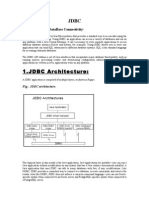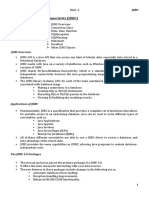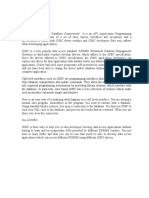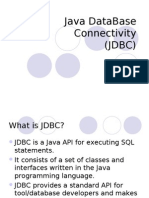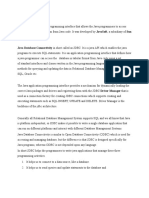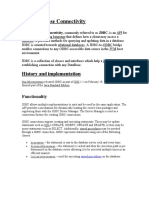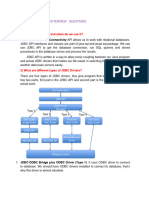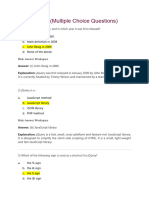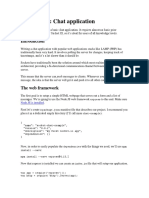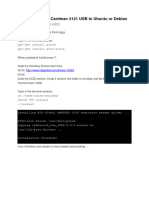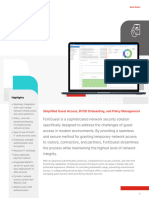0% found this document useful (0 votes)
10 views17 pagesUpdated Module 5
The document provides an overview of Java Database Connectivity (JDBC), detailing its purpose, components, and types of drivers. It explains how JDBC allows Java applications to connect to relational databases, execute SQL queries, and process results, while also highlighting the differences between various JDBC driver types. Additionally, it includes example Java programs demonstrating database connection, query execution, and the use of metadata in JDBC.
Uploaded by
4al22cs128Copyright
© © All Rights Reserved
We take content rights seriously. If you suspect this is your content, claim it here.
Available Formats
Download as PDF, TXT or read online on Scribd
0% found this document useful (0 votes)
10 views17 pagesUpdated Module 5
The document provides an overview of Java Database Connectivity (JDBC), detailing its purpose, components, and types of drivers. It explains how JDBC allows Java applications to connect to relational databases, execute SQL queries, and process results, while also highlighting the differences between various JDBC driver types. Additionally, it includes example Java programs demonstrating database connection, query execution, and the use of metadata in JDBC.
Uploaded by
4al22cs128Copyright
© © All Rights Reserved
We take content rights seriously. If you suspect this is your content, claim it here.
Available Formats
Download as PDF, TXT or read online on Scribd
/ 17








